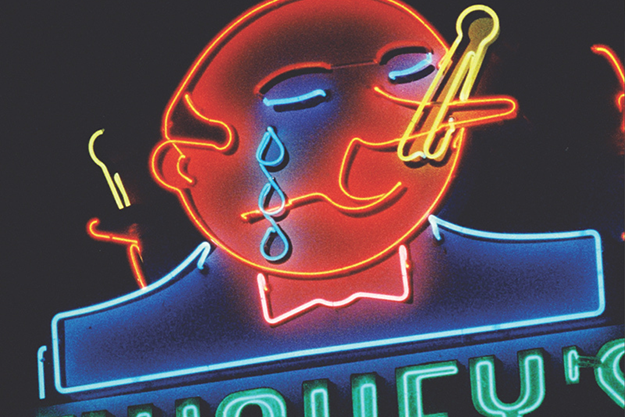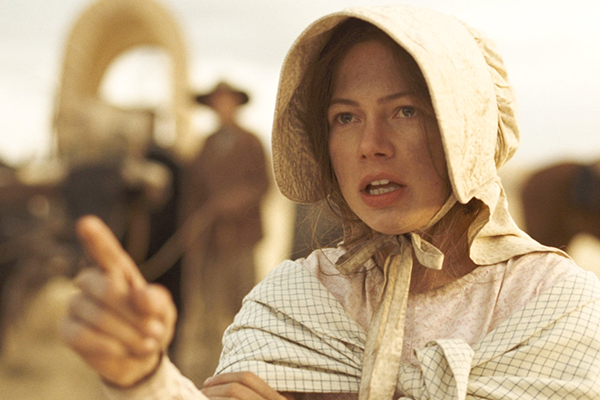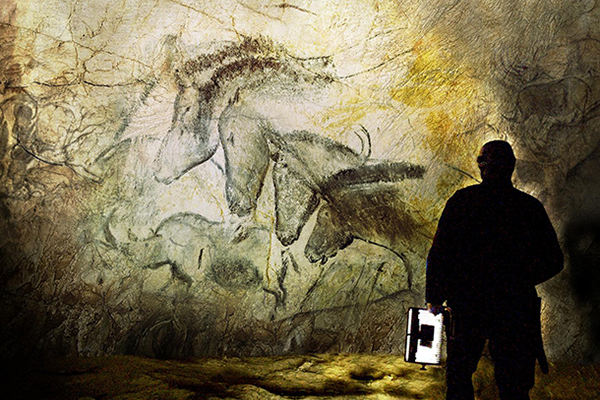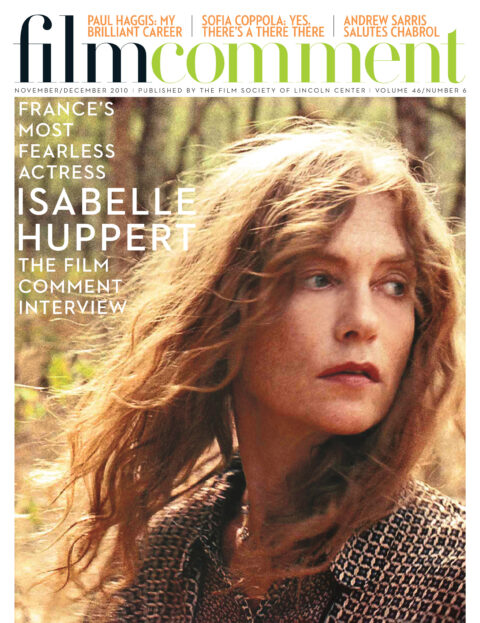
Get Out of the Car
The title of Thom Andersen’s new film, Get Out of the Car, serves as an entreaty. The film is an insider’s guided tour of overlooked Los Angeles building facades, disused billboards, Chicano mural art, barbed-wire–enclosed sites of now-vanished historical landmarks (ranging from the El Monte Musical Hall to the South Central Farm), burger spots, and a dilapidated Baptist church designed by Rudolph Schindler. The city’s history is manifested through absence, in what amounts to a modest but insistent political stance: if we stayed put long enough, or felt personally connected to our community’s origins, we’d not only know what’s missing, we might even regret its loss.
Andersen’s footage, gathered with his Bolex, is accompanied by occasional conversations with passersby and an exhaustive collage of popular music spanning 60 years, all written or performed in Los Angeles. Applying pop songs to shots of the sites that inspired them is just one of many instances of the film’s layering strategy. Paint touch-ups appear as vibrant gradations of color on corrugated metal facades. Peeling billboard palimpsests yield abstract patterns and textures. Gang spray-paint tags pepper ubiquitous depictions of Christ or the Virgin of Guadalupe. Apparently empty spaces are haunted by previous incarnations. Andersen’s subjects are concrete records of time passing, of persistent aesthetic evolution made acutely visible. His own progress is likewise revealed—every sight and sound is born of a personal history conjoined with that of the city he lives in.
Andersen primarily uses medium shots in Get Out of the Car because they ground the film’s sites and signs in their immediate environment—an environment that includes ambient sound. And because the sweep of the cityscape is omitted, the frames and their details draw you in. Similarly, Kelly Reichardt’s magnificent period piece Meek’s Cutoff, shot in 1.33:1 aspect ratio, limits our field of vision. By doing so, she prioritizes the foreground action, though the expansive setting is ripe for romantic metaphor. Unlike other Westerns, Meek’s Cutoff mostly foregoes vistas to firmly root its characters in their immediate surroundings and moment. It also suggests that, struggling as they are, they can’t afford to look beyond their limited frame. How can you think about tomorrow when faced with a struggle to survive today?

Meek’s Cutoff
Meek’s Cutoff is set in 1845 Oregon and follows the westward journey by covered wagon of three couples dependent upon their guide, Meek (Bruce Greenwood). His shortcut leads them woefully off-course, tramping through high desert as they run out of food and water. After dark, the men urgently discuss how to deal with Meek, unsure if he’s just irresponsible or malevolently leading them astray. Their wives are shut out of this and all other conversations concerning the group’s options, and the women’s exclusion and sense of powerlessness is amplified by the barren landscape around them. Eventually, a Native American (Rod Rondeaux) appears and is subsequently captured. An argument ensues as to whether to kill him or rely on him to guide them. Unlike the others, Emily Tetherow (Michelle Williams) reaches out to him, perhaps because, like her, his worth is debatable, he’s not listened to, and he bears a burden of forced labor.
The film’s title is visualized as needlework and Reichardt keeps returning to repetitive, traditionally female hand tasks throughout. These depictions of work inform the film’s sense of duration. In a landscape marked only by changes in weather or the position of the sun, the passage of time is measured by how long it takes to do the washing, set up the tent, and make the meals. These chores are very much part of the film’s drama. In one scene, a wagon wheel breaks and everything halts while it is fixed—a process that is depicted at length. Interdependence arises from necessity because without collective effort, tasks take too long to complete. More astute than the others, Emily knows that favors are a form of commerce and so she shares food with the Native American and repairs his moccasin—being depended upon is a form of power.
The Native American’s position shifts further by the role of dependency in the group dynamic. He passes from iconic enemy to individual when his captors realize that their survival may depend on his familiarity with the territory. His sense of place grows apparent when the encamped group tie him up and he occupies himself by rendering petroglyphs. Amidst such forbidding silence and emptiness, where conversation and passage are dispiritingly transient, his form of communication is ironically far more permanent. In Cave of Forgotten Dreams, Werner Herzog explores the origins of figuration and abstract thought by visiting France’s Chauvet caves. Shot in 3-D, the film’s opening is instantly immersive as Herzog leads us through a vineyard and along a steep ledge toward a door in the rock face. He follows the route taken in 1994 by the cave’s discoverers who went looking for drafts of air that might lead to an open shaft. They uncovered a vast cave decorated over 32,000 years ago with paintings of lions, horses, panthers, and bison. Animal bones are strewn around the floor and a bear skull rests on an altar-like pedestal. The calcium chloride coating the stalactites makes them resemble smooth, polished sculptures.

Cave of Forgotten Dreams
Herzog employs 3-D to record the walls’ contours and to give the viewer a greater feeling of presence. This sensation is heightened by the remarkable freshness of the images. The eyes of the painted animals, in particular, are bright, intense, and soulful. France has barred the cave to visitors not involved in the site’s study, so Herzog’s access is a coup. His small crew was restricted to minimal lighting, equipment, time, and space, but these limitations are turned to glorious advantage. The subtle lighting suggests candlelight and the absence of people enables the viewer to feel engaged in solitary discovery. The film is permeated by a sense of awe since Herzog is showing us something we’d never see otherwise. This mood is augmented still further in the film’s final minutes in the cave when Herzog accompanies a final sweep of the paintings with Ernst Reijseger’s choral music—to profound effect. Choirs are mesmerizing because they join multiple voices together to make one sound. Pairing this expression of unity with unfathomably ancient artwork underlines that we belong to a formidable ancestry and are connected to the entirety of human experience.
Cave of Forgotten Dreams leaves us wondering what inspired its long-dead artists to render animals with such delicacy and reverence. If the presence and power of these wild beasts circumscribed human life, depicting them may have helped soothe fears. We’re shown that one artist painted on cave-bear scratch marks, as if to imbue the resulting picture with the animal’s essence. Perhaps they were seen as spirit animals and used for divination. One of Herzog’s interviewees explains that Paleolithic man believed in a fluidity between people and nature. You might experience this sensation of elasticity while watching the films of Nathaniel Dorsky, most of which contain radiant images of flowers and trees inspirited by sunlight and wind. His three latest films, Compline, Aubade, and Pastourelle, were screened in the festival’s Wavelengths section, and elaborate on the intimate, inimitable style the filmmaker has honed for 40-plus years. The uncommon beauty and poignancy of his work derives from its ephemerality. Dorsky gathers his images by taking walks with his camera, and the resulting films condense long periods of personal exploration. He explains that they constitute “the world as it comes through the hole of the Bolex,” and while this description encapsulates their purity, it doesn’t account for the mind and eyes behind the camera. His images are found, not sought, and commemorate particular kinds of light and certain moments that, without him, might go unnoticed. While other films are best watched at a distance, Dorsky’s should be experienced up close. With the audience behind you, contemplation comes more easily and it almost feels possible to enter the image. Dorsky says filmmakers “have to turn the screen into an object.” His screen is engrossing, immersive, and feels like it has room for you inside it.
Though silent, like all Dorsky films, Aubade and Pastourelle are named for types of love songs. His editing establishes tempo, and the shots, lyrical yet specific, thread through the film like melody lines. Music owes its universality to its abstract and primal qualities, which evoke intense emotion. Dorsky’s films operate on the viewer in this manner while still relying on recognizable images. By presenting music visually, he enlarges our sense of what songs and films alike can be. In particular Dorsky is drawn to the ways in which one thing becomes a conduit for transmitting another. Window surfaces are a recurring motif: through reflection, panes of glass contain images while remaining transparent, transforming the appearances of people or street scenes. There’s a shot in Pastourelle of vertical blinds shading a window; a strand pivots on its axis, animated by a draft. It’s mundane and magical simultaneously, an inconsequential detail that contains everything that is meaningful about seeing and being. The blind and the breeze share an interconnectedness you feel in your bones. An explication can’t do it justice. The wonder lies in the fact that it simply is.




